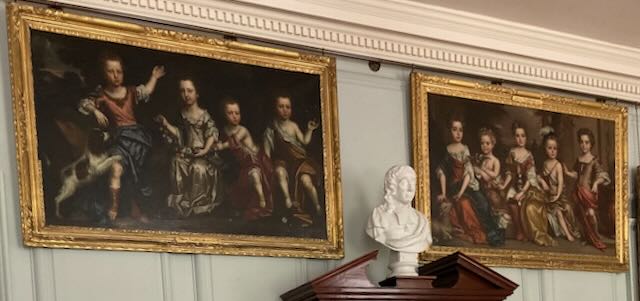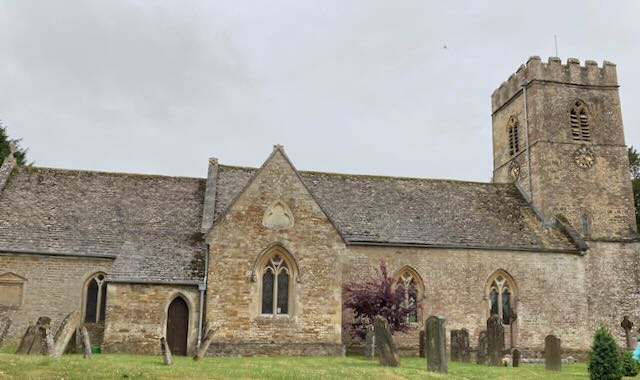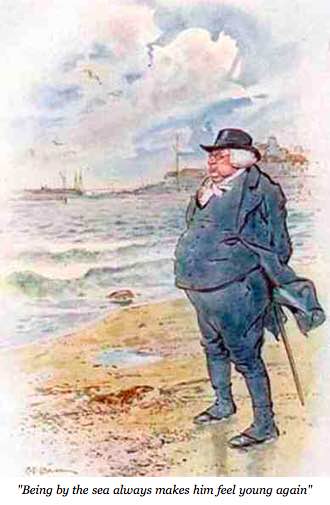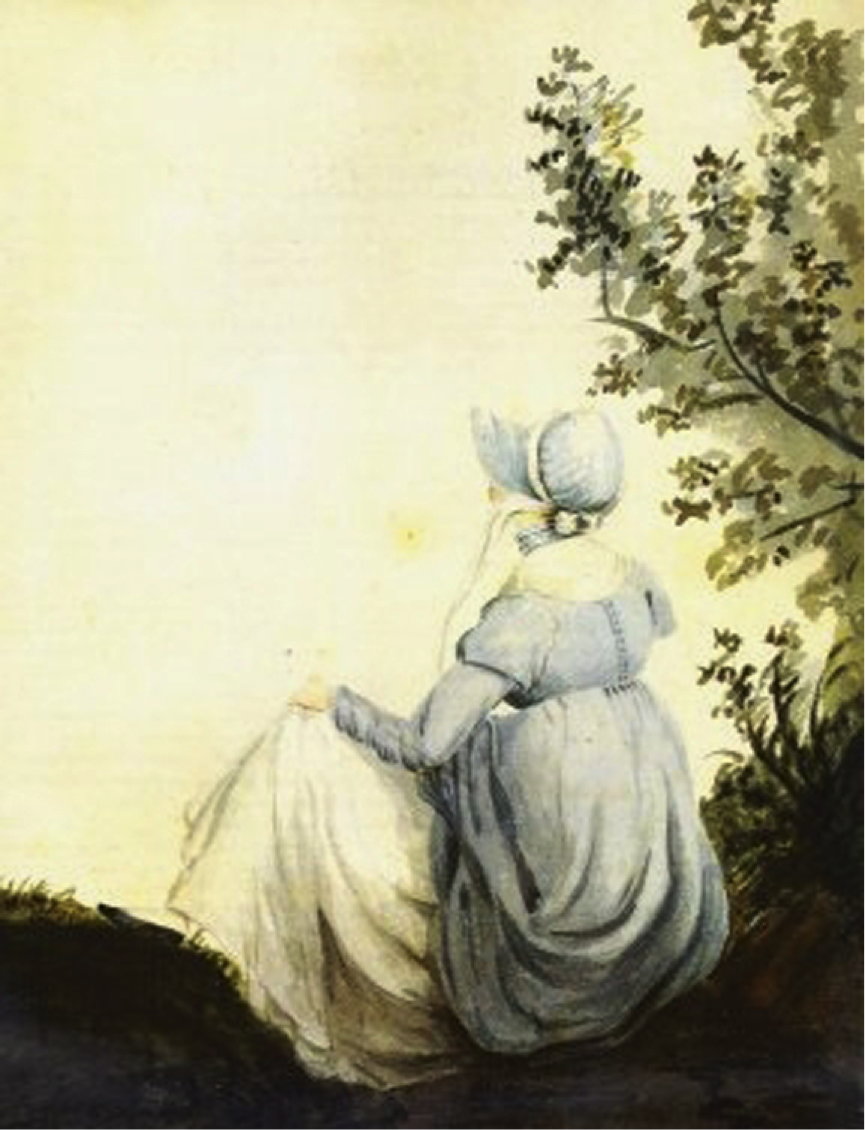By Brenda S. Cox
If Edward might be judged from the ready discharge of his duties in every particular, from an increasing attachment to his wife and his home, and from the regular cheerfulness of his spirits, he might be supposed no less contented with his lot . . .”–Sense and Sensibility, chapter 50
Jane Austen often wrote about clergymen. We think of foolish Mr. Collins of Pride and Prejudice, honorable Edward Ferrars of Sense and Sensibility, ambitious Mr. Elton of Emma, upright Edmund Bertram of Mansfield Park, witty Henry Tilney of Northanger Abbey, and earnest Charles Hayter of Persuasion.

None of Austen’s characters were based directly on real people. But she must have taken characteristics from various people she knew or had observed. And for the clergy, she had many, many options, on both sides of her family. Today we’ll look at the clergy on her mother’s side of the family, to see if they resemble any of Austen’s clergymen. If you missed my earlier posts on the Leighs, check them out: “Stories Behind the Stories” and “Jane Austen’s Richer(er) Leigh Family Connections.”
The Leigh Family
Cassandra Leigh’s grandfather, Theophilus Leigh (1643-1724) was the squire of Adlestrop. He made an illustrious marriage to the sister of the Duke of Chandos. Their oldest son, William, became the next squire, and the two younger sons, Theophilus and Thomas, become clergymen. This was a common practice. Similarly, for Austen’s Henry Tilney and Edmund Bertram, their older brother would inherit the estate, while the younger brother went into the church. He would take a nearby living for which the family held the advowson (the right to choose the clergyman for the parish).

Jane Austen’s Great-Uncle, Rev. Dr. Theophilus Leigh
The first of the two younger Leigh sons was Rev. Dr. Theophilus Leigh (1693-1785). He became Master of Balliol College at Oxford, probably because of his connection with a duke. Theophilus was “small, thin, [and] clever.” “He was renowned beyond the bounds of Oxford University for his witty and agreeable conversation and for the sense of humour which he retained up to his dying day” (Le Faye, 8). That sounds like Henry Tilney to me! Huxley gives these examples of Dr. Theophilus’s wit:
“Theophilus II was . . . celebrated among his contemporaries at Oxford as a great wag and raconteur [a funny, entertaining story-teller]. A famous bon-mot, repeated at the Austen dinner table, related how, on hearing that a colleague had been ‘egged on’ to marriage, Theophilus commented: ‘Let us hope the yoke will sit lightly upon him.’”
When James Austen was at Oxford, he and his father had dinner with Theophilus II, 85 years old. “Still as sharp as a pin, Theophilus remarked when James took off his gown before eating: ‘Young man, you need not strip, we are not going to fight’” (Huxley, 14).
When Dr. Theophilus met his niece Cassandra Leigh, age six, he was impressed. He called her “the Poet of the Family” who wrote “Smart pieces promising a great Genius” (Le Faye, 10). According to family tradition, Cassandra Leigh met her husband-to-be, George Austen, when she was staying with her Uncle Theophilus at the Master’s Lodge in Oxford. Huxley speculates that Jane’s mother may have inherited “her wit and incisive turn of phrase” from Dr. Theophilus rather than from her own father.

Dr. Theophilus was given the family living as rector of Adlestrop. However, he focused his attention on Oxford and paid a curate, appropriately named Mr. Parsons, to carry out his duties at Adlestrop church. This caused some friction with his father. After many years of being an absentee rector, Dr. Theophilus finally preached a sermon at Adlestrop. Afterwards, his father told him, “Let us hereafter have less Rhetoric and more Divinity.” His father wanted him to talk more about God and the Bible, with less fancy language.
Jane’s Grandfather, Rev. Thomas Leigh (1696-1764)

Dr. Theophilus’s younger brother was also an academic. Cassandra Leigh Austen’s father, Rev. Thomas Leigh, was a fellow of All Souls College, Oxford. Because he was elected a fellow (senior member of the college) at a very young age, they nicknamed him “Chick” Leigh. Many Oxford colleges hold advowsons. All Souls held the advowson for Harpsden, in Oxfordshire. Rev. Thomas Leigh received that living in 1731, when he was 35 years old.

Rev. Thomas’s niece, Mary Leigh, described him as “one of the most contented, quiet, sweet-tempered, generous, cheerful men [she] ever knew and his wife was his counterpart” (Huxley, 13). This sounds like the kind of couple Edward and Elinor Ferrars would have been after their marriage. (Jane Austen never knew her grandfather, but must have heard her mother talk about him.)
Rev. Thomas Leigh married Jane Walker, a descendant of the Perrot family. They had six children, including Jane’s mother. Cassandra Leigh grew up in the “rural but elegant rectory of Harpsden.” (Scroll down at this link for a photo.) Her brother James later changed his name to James Leigh-Perrot, in order to receive a large inheritance from his mother’s family.
Jane’s Godfather, Dr. Theophilus’s Son-in-Law, Rev. Samuel Cooke
Dr. Theophilus also had a daughter named Cassandra. [These family names are confusing, I know.] His Cassandra married Rev. Samuel Cooke, rector of Cotsford and vicar of Great Bookham, our Jane Austen’s godfather. (Their two sons became clergymen also.) It’s possible that Great Bookham, where Austen visited, was the basis for Emma’s Highbury (Le Faye’s Family Record, 213). Box Hill is nearby. We’ll “visit” Great Bookham in a later post.


Rev. Thomas Leigh (Jane’s first cousin once removed) and His Wife Mary
When squire Theophilus died, his son William (brother of Jane’s grandfather) became the next squire of Adlestrop, followed by William’s son James. James had a younger brother named Thomas who also became a clergyman. This Rev. Thomas Leigh was Cassandra Leigh Austen’s first cousin. He later inherited Stoneleigh Abbey and took Jane and her family there.
This younger Rev. Thomas married Dr. Theophilus’s daughter Mary (his first cousin, as in Mansfield Park). At that point, Dr. Theophilus gave up the Adlestrop living to give it to Rev. Thomas, his daughter’s husband. They moved into the rectory. (Dr. Theophilus took another living, in Somerset, but spent much of his time with them at the rectory until he died, his mind still sharp, at age 92.)
Rev. Thomas’s wife Mary wrote “some novels highly moral & entertaining” and enjoyed “drawing and painting in miniature.” Her paintings decorated the parsonage. Her husband called her “one of the most affectionate of wives & most agreeable cheerful and entertaining of companions.”
Jane knew Rev. Thomas and his family well. She called him “worthy, clever, and agreeable.” When she was growing up, he often stayed with her family, and would give the children small gifts of money. He was Henry Austen’s godfather and his sister Elizabeth, who lived with him, was Cassandra’s godmother.
The Leighs’ parsonage at Adlestrop, where the Austens visited several times, was grander than Steventon, with many more servants. In 1805 Rev. Thomas had £513 a year in interest from investments, besides his living. The living provided about £700 a year, like Edmund Bertram’s living at Thornton Lacey in Mansfield Park. Servants included the butler, Mr. Rainbow; two livery servants; a gardener and his helper (not resident); and five women servants. Jane mentioned one of the women, Rebekah Cadwallader, in a letter in 1809. The rector’s coachman lived next door to the rectory. Apparently they used a coach with the Leigh coat of arms on it. Dr. Grant of Mansfield Park also has his own carriage and horses.
Rev. Thomas also gives us a picture of what Edmund Bertram must have been like when he took the living of Mansfield Park. He was part of the family at the “great house,” the family manor. As Huxley points out, “in Adlestrop Jane Austen observed her cousins enjoying total sway in the great house, as well as in the pulpit, all bolstered by the financial benefits of their landownership” (19).


Rev. Thomas held the family living at Adlestrop for 51 years. Huxley writes, “The Revd Thomas Leigh was a huge influence on the village and always in residence, recording in his meticulous hand every birth, wedding and death that took place among his parishioners. In this he resembled Jane’s father who had a similar hand-on approach and was also well-read and cultured.” He was also like Edward Ferrars, who is praised for “the ready discharge of his duties in every particular” (Sense and Sensibility, ch. 50).
In contrast to his absentee uncle, Rev. Thomas lived in Adlestop and ministered there as long as he could. Sir Thomas Bertram would have approved. He says in Mansfield Park,
“A parish has wants and claims which can be known only by a clergyman constantly resident, . . . He knows that human nature needs more lessons than a weekly sermon can convey; and that if he does not live among his parishioners, and prove himself, by constant attention, their well-wisher and friend, he does very little either for their good or his own.”
After Rev. Thomas inherited Stoneleigh Abbey, he hired a curate to serve the church at Adlestrop, but he and his sister still spent much time there because they loved their home and parish so much (Caroline Austen, 19).
Mr. Collins says that the rector of a parish must be concerned about tithes and about “the care and improvement of his dwelling.” Rev. Thomas was very involved in making improvements to the grounds around his rectory, as well as helping his brother and nephew to make improvements to their estate. He also spent much time dealing with tithes, rents, and roads.
Rev. Thomas Leigh also had other duties. He had no children of his own. But his brother, the squire, died when his son, the heir, was only nine years old. Rev. Thomas became the boy’s guardian and took care of all the Leighs’ affairs until his nephew came of age. We can imagine that Edmund Bertram would have acted like this, caring for his family’s needs as well as his community. Huxley says the Leigh family, including squires and clergymen, gave Adlestrop village stability and strong roots. Jane Austen admired such communities.
When Rev. Thomas Leigh died, Jane Austen wrote to her brother Frank (July 3, 1813) that if they had not already been in mourning, they “should now be putting it on again for Mr. Thos. Leigh—the respectable, worthy, clever, agreable Mr. Tho. Leigh, who has just closed a good life at the age of 79, & must have died the possessor of one of the finest Estates in England [Stoneleigh Abbey] . . . We are very anxious to know who will have the Living of Adlestrop.”
Jane’s Uncle, Rev. Dr. Edward Cooper
Cassandra Leigh’s brother-in-law, Rev. Dr. Edward Cooper (who married Cassandra Leigh’s older sister Jane), was a fellow of All Souls at Oxford, then became rector of Whaddon and Sonning. He was “a rosy, round-faced divine, with a most amiable expression” (Le Faye, 9). Perhaps Jane had him in mind when she wrote about “dear, good Dr. Shirley” of Persuasion.

Patroness Mary Leigh
Having rich relatives was useful to the clergymen of the family. The Honorable Mary Leigh was a more distant relative who held Stoneleigh Abbey for twenty years after her brother’s death. She gave Jane’s cousin Edward Cooper his living at Hamstall Ridware in Staffordshire, where Jane and her family visited after they left Stoneleigh. The Hon. Mary was godmother to the Coopers’ oldest daughter.


The Hon. Mary Leigh also gave two livings to Jane’s brother James Austen. She made James vicar of Cubbington and perpetual curate (similar to a vicar) of Hunningham. James was an absentee for both these livings, but received income from them. He was in residence as a curate at Deane and Steventon and then rector at Steventon (livings provided by his father’s relatives). He also had another living provided by a hunting buddy. Mary also left an annuity for the care of Cassandra Leigh Austen’s handicapped brother (cared for by the same family who looked after Jane’s handicapped brother, George). She obviously felt she should share her blessings with poorer relatives.
The Hon. Mary was also known for her generosity and care for the poor. Her obituary in the Oxford Journal, July 12, 1806, says,
“Of her it can with truth be said, that the great estates, which descended to her from her brother, were always dedicated to the best and noblest of purpose, the relief of the distressed, and the general good of her fellow creatures.”
Perhaps Lady Catherine de Bourgh is a reflection of the Honorable Mary Leigh’s powerful position, but without Mary’s kindness.
One more example of her compassion for her own family: Her brother, Edward, the fifth Lord Leigh, had been an intelligent scholar. However, his mental health deteriorated and he was declared insane in 1774. His sister Mary took over management of the estate, where a doctor cared for her brother. The next year, she wrote this prayer (quoted in Jane Austen & Adlestrop, 114):
O Lord, look down from Heaven, in much pity and compassion, upon thy afflicted servant, who is not able to now look up to thee, hear O most merciful Father my Prayers on his behalf, and preserve him from doing any harm to himself or to any other; be pleased to remove all frightfull imaginations far from him, and if it be the blessed will, O our God restore him to his reason and understanding, so will we all give thanks to thee for ever and ever. Amen.
Austen doesn’t mention insanity in her novels (though there is certainly some craziness in the Juvenilia). But she no doubt heard this family story, among many others. In her prayers she wrote, “Look with compassion upon the afflicted of every condition, assuage the pangs of disease, comfort the broken in spirit.” Her best clergymen show this compassion. We can think of Henry Tilney’s kindness toward Catherine when she was ashamed, with a “broken heart.” And of Edmund Bertram’s “active kindness” to little, lonely Fanny Price. Edward even feels compassion for Lucy Steele, when he believes that she loves him. Such compassion was a virtue Austen admired and wrote about.
***
So, some of Jane Austen’s Leigh clerical relatives might have given her ideas influencing the characters of Henry Tilney, Edmund Bertram, and Edward Ferrars. Though, of course, Austen’s genius in creating these characters is all her own!
Our world today is quite different from Jane Austen’s. Because of modern transportation and communication, most people in Western countries are not restricted to a small country community. How has this changed the role of the clergy and the church, for better and for worse?
Posts on Stoneleigh Abbey are coming soon!
Brenda S. Cox is the author of Fashionable Goodness: Christianity in Jane Austen’s England.
Sources
Jane Austen & Adlestrop : Her Other Family, Victoria Huxley
Jane Austen: A Family Record, Deirdre Le Faye
Reminiscences of Jane Austen’s Niece, Caroline Austen
A Short Introduction to Jane Austen and Stoneleigh Abbey, by Sheila Woolf (booklet obtained from Stoneleigh Abbey)
Further Reading
“Jane Austen’s Leigh Family: Stories Behind the Stories”
“Jane Austen’s Richer(er) Leigh Family Connections at Adlestrop and Stoneleigh Abbey”
“Edward Cooper: Jane Austen’s Evangelical Cousin”
“Jane Austen’s Family Churches: St. Michael and All Angels, Hamstall Ridware”
“The Leigh Family of Stoneleigh” from one of the churches for which they were patrons
“Jane Austen’s Family History at Stoneleigh Abbey” includes more photos.
“A Treasured Possession: Jane Austen and the Chandos Letter”



So Jane’s uncle took “-Perrot” from his own family? Fascinating. I always thought it came from his wife. …
LikeLike
Yes, interesting, isn’t it, Collins? I just doublechecked that in Deirdre Le Faye’s Family Record, page 8-9. Jane’s mother Cassandra, and her brother James, had a great-aunt (their mother’s aunt), “old Miss Anne Perrot,” “who taught her great-nieces to read and to do fine needlework.” Miss Anne Perrot had a childless brother, Thomas Perrot, who planned to leave his estate to her. She convinced him to instead leave it to their great-nephew James Leigh, with just an annuity for herself. To inherit, James had to take the surname and arms of Perrot, which he did in his teens when Mr. Thomas Perrot died (1751). When he came of age he inherited the Northleigh house and lands (he soon sold them and bought Scarlets, which had previously belonged to his mother, instead). His sister Cassandra inherited £200 from this same great-aunt. In 1764 James married an heiress (to an estate in Barbados), but he was already Leigh-Perrot well before then.
LikeLike
Brenda,
I expect you’ve heard about the new Austen movie about Cassandra Austen. It’s currently in production in England.
LikeLike
No, I hadn’t heard, but that’s exciting. I see now that they are adapting Gill Hornby’s book, Miss Austen, which is an excellent book; I recommend it!
LikeLike